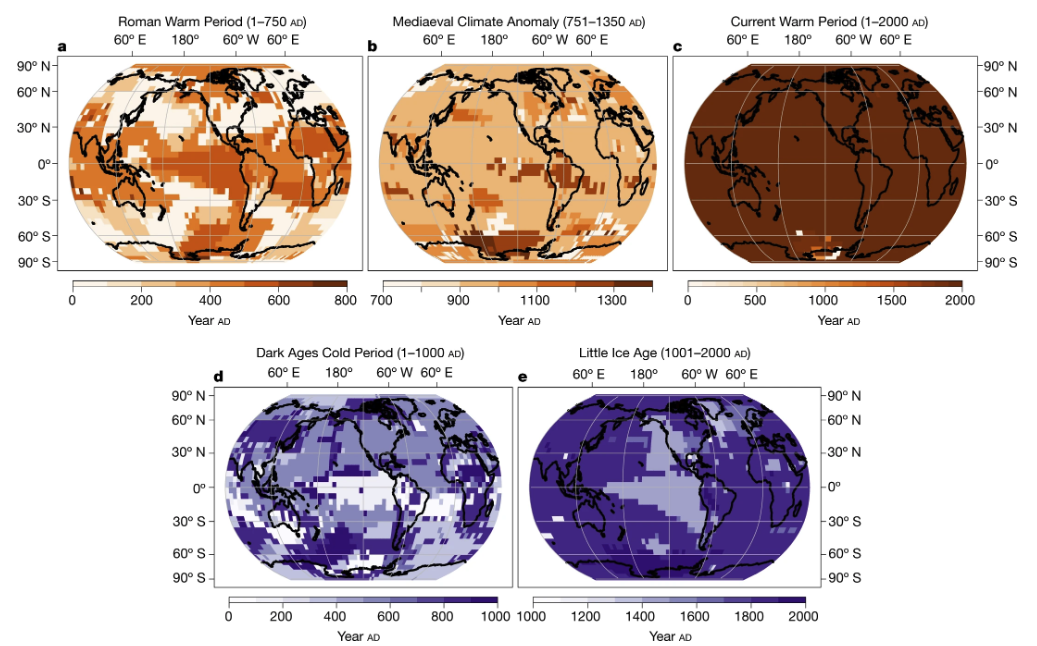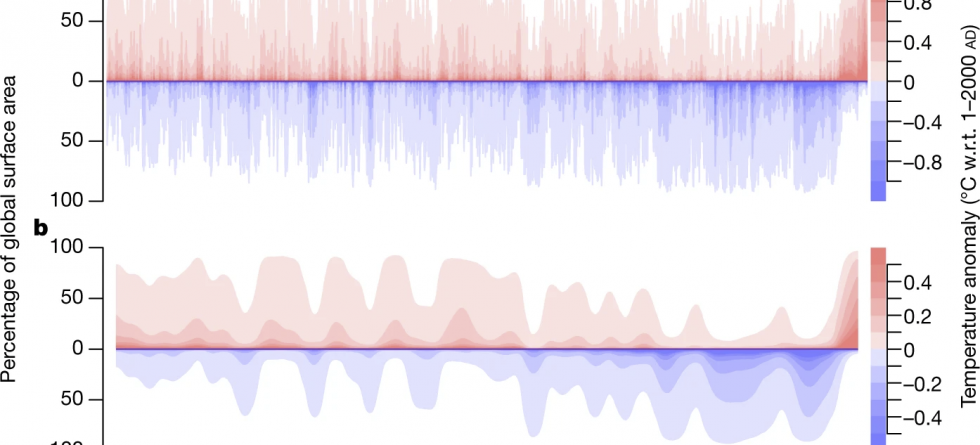Written by Oeschger Center for Climate Change Research
Many people may have heard of the “Little Ice Age” (from approx. 1300 to 1850). It’s characterized by paintings showing people skating on Dutch canals and glaciers advancing far into alpine valleys. That it was extraordinarily cool in Europe for several centuries is indicated by a large number of temperature reconstructions using tree rings, for example, not just by historical paintings.
As there are also similar reconstructions for some places in North America, it was assumed that the “Little Ice Age” and the similarly famous “Medieval Warm Period” (approx. 700 – 1400) were global phenomena.
But now an international group led by Raphael Neukom of the Oeschger Center for Climate Change Research at the University of Bern is painting a very different picture of these alleged global climate periods.
In a study which has just appeared in the scientific journal Nature, the team shows that there is no evidence that there were uniform warm and cold periods across the globe over the last 2000 years.

Climate fluctuations in the past varied from region to region
“It’s true that during the Little Ice Age it was generally colder across the whole world,” explains Raphael Neukom, “but not everywhere at the same time. The peak periods of pre-industrial warm and cold periods occurred at different times in different places.”
According these climate scientists, the now-debunked hypothesis of climate phases occurring at the same time across the globe came about because of the hegemony of climate time series developed several decades ago from Europe and North America. In the absence of data from other parts of the earth, this notion was applied to the whole planet, raising expectations that relatively cold or warm periods throughout the last 2000 years were globally synchronous phenomena. But it has now been shown that this was not the case.
The authors of the study in Nature see the explanation for that as being that regional climates in pre-industrial times were primarily influenced by random fluctuations within the climate system. External factors such as volcanic eruptions or solar activity were not intense enough to cause markedly warm or cold temperatures across the whole world for decades, or even centuries.
The researchers relied upon a database from the international research consortium PAGES (Past Global Changes), which provides a comprehensive overview of climate data from the last 2000 years, for their investigation of five pre-industrial climate epochs. In addition to tree rings, it also includes ice cores, lake sediment and coral. To really put the results to the test, the team led by Raphael Neukom analyzed these data sets using six different statistical models – more than ever before. This allowed for the calculation of the probability of extremely warm or cold decades and centuries, and not just the calculation of absolute temperatures.
The current warm period is happening across the world for the first time
The result was that no globally coherent picture emerged during the periods being investigated.
“The minimum and maximum temperatures were different in different areas,” says Raphael Neukom. So temperature extremes across the world cannot be inferred from regional temperature phenomena like the oft-mentioned “Medieval Warm Period” in Europe and North America.
The results look very different for recent history. The study shows that the warmest period of the last 2000 years was most likely in the 20th century. The study also shows that this was the case for more than 98% of the surface of the earth.
This shows – once again – that modern climate change cannot be explained by random fluctuations, but by anthropogenic emissions of CO2 and other greenhouse gases. What we didn’t know until now is that average global temperatures in the 20th century had not been that high in at least 2000 years, and that a warming period was affecting the whole planet at the same time for the first time.
Referanse
Raphael Neukom, Nathan Steiger, Juan José Gómez-Navarro, Jianghao Wang & Johannes P. Werner (2019): No evidence for globally coherent warm and cold periods over the preindustrial Common Era, Nature, volume 571.

